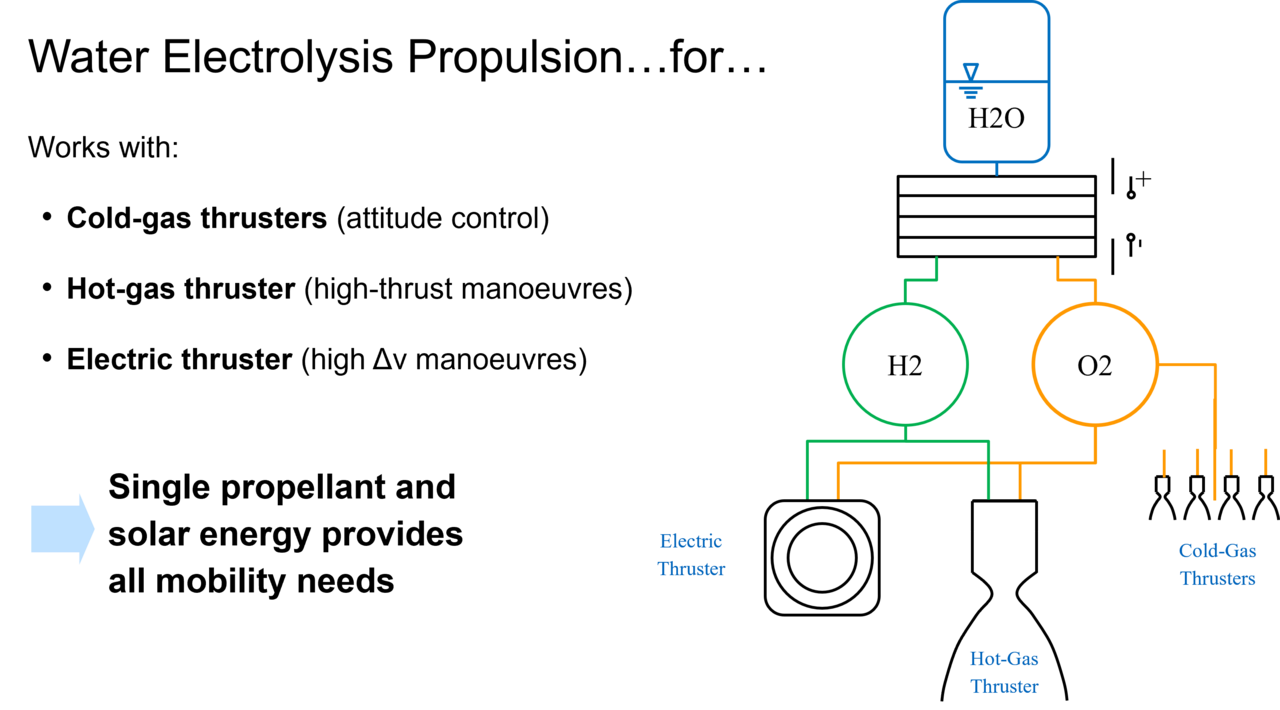Water Electrolysis Propulsion
In-space propulsion is commonly provided by hydrazine-based propellants used in thrusters which range in thrust from 1N to 1000N. These propulsion subsystems are used for attitude control of the satellites, as well as for orbital manoeuvres. Hydrazine propellant is highly toxic and a known carcinogenic and has a high risk of detonation. Its derivatives such as MMH share some of these undesirable characteristics as does nitrogen tetroxide (N2O4 or NTO) a commonly used oxidiser. While these propellants are mostly used for satellites, some launcher systems still make use of them, such as the Long March and Proton launch vehicles. The use of these propellants has environmental implications (most clearly demonstrated during crashes such as those of Long March main stages or the Ariane 5G flight V88) but also has implications in operation requiring expensive health system maintaining people safe during procedures such as propellant loading and integration. The development of alternative propellants had been ongoing since decades at a research level. The aim has been to find propellants, which are storable but clean and with a performance which is at least as good as that of hydrazine. Recent developments have investigated aqueous multicomponent solutions of ammonium dinitramide (ADN) or hydroxylammonium nitrate (HAN), concentrated hydrogen peroxide, blends of hydrocarbon fuels and nitrous oxide or energetic ionic liquids (EIL). However, none of these are completely environmentally friendly and their performance is similar to that of hydrazine.
Water electrolysis propulsion on the other hand not only makes use of the cleanest of all fluids but also has the potential to significantly outperform hydrazine-based system. Water electrolysis propulsion makes use of an electrolyser, powered by the energy onboard provided by solar panels, to decompose water into hydrogen and oxygen for combustion in a thruster. While the technology for water electrolysis has been around since the 19th century only very recently has this become of interest for space propulsion applications. Clear advantages are that water is environmentally friendly, extremely storable, and that hydrogen-oxygen combustion provides performances beyond those achievable with propellants currently used for satellite propulsions. NASA and ESA and organisation collaborating with them [de Groot (1997), Herbertz (2022)], have all been looking at WEP as a potential solution for in-space propulsion but to date no demonstration has been made. Several challenges remain open, most notably linked to the electrolyser, its efficiency and resilience to impurities and linked to the thruster and the reduction of thermal losses to maximise efficiency, as well as its resilience to humidity in the produced oxygen and hydrogen and the purity of gases.
